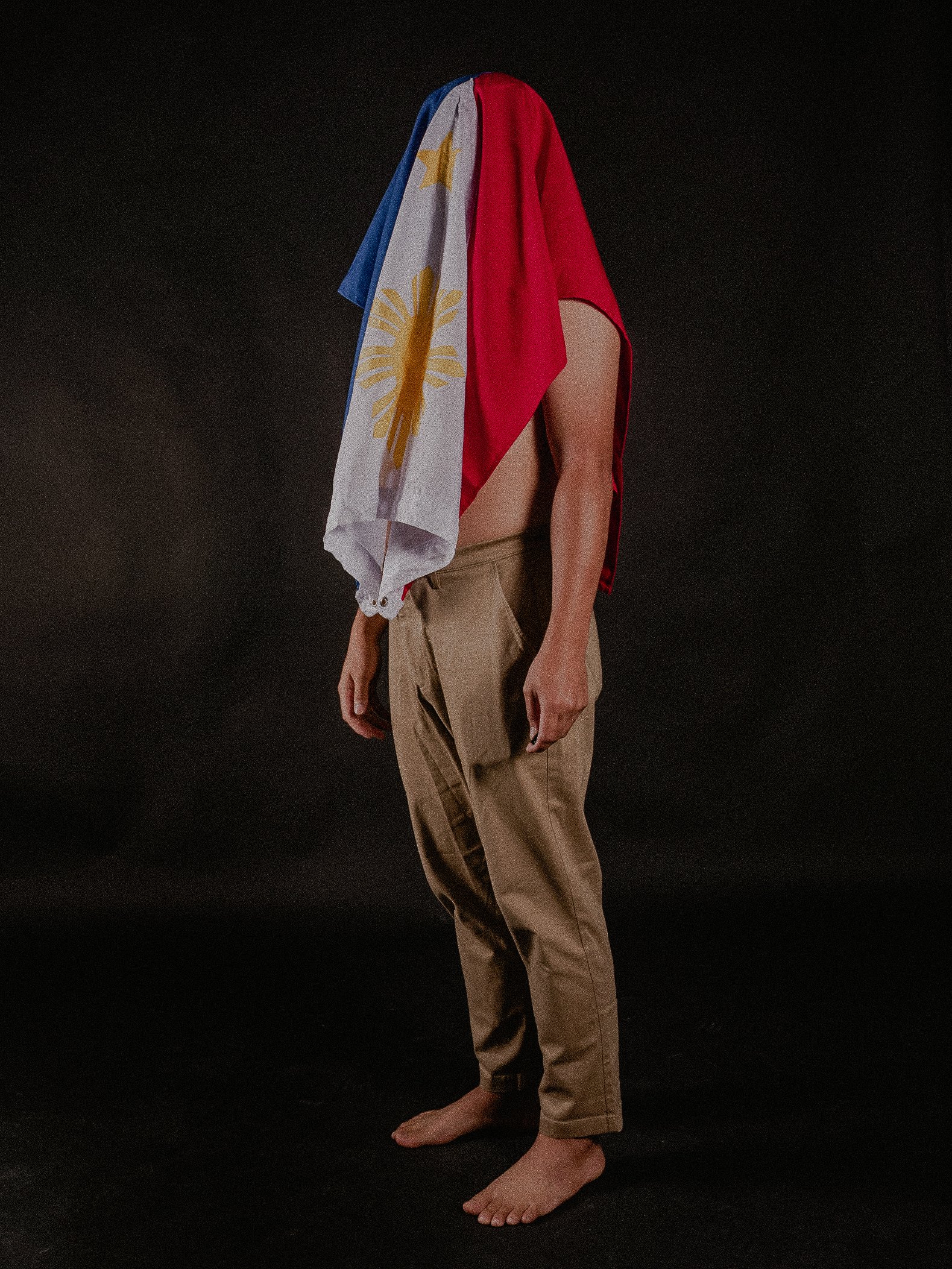KHIM HIPOL - EXPOSURE INTERNATIONAL OPEN CALL
Anak ng Lupang Hinirang (Child of the Chosen Land) is a series of photographic images that use the body and symbolic objects tied to Filipino national identity to capture a profound and intimate feeling of patriotism and nationalism. As a Filipino national who lives and works in Canada, I am aware of the heavy history of colonization here; this series explores the complicated history of colonization in the Philippines and the way in which this history has infiltrated our national identity. The Philippine flag, the panuelo, reflects the legacy of the Spanish Colonizers. The Crown symbolizes beauty pageants which come from the influence of the American colonizers, reinforcing Western beauty standards. These objects, integrated with the body, pay homage to Filipino national identity and employ the conventions of familiar tropes of this identity to rearticulate and question each icon and the histories it bears. The body performs together with the symbols subverting the object’s standard, patriotic reading. As a result, the images encourage viewers to question the subjects’ origin and the true meaning of the objects they hold.
BIOGRAPHY
Khim Hipol (b. 1999 in City of San Fernando, La Union, Philippines) is an Interdisciplinary artist residing in the unceded territories of the Squamish, Tsleil-Waututh and Musqueam peoples also known as North Vancouver. Through the lens of a camera and printmaking, installation, sculpture, and bookmaking his work focuses on the subjectivity of his identity, culture, and childhood upbringing and how all change when migrating.
My current practice explores the themes of Identity, Culture, Immigration, and Translation. Utilizing the medium of photography, I investigate the said concepts through portraiture and performance. While in front of the camera, I re-member mind my past lived experiences--to unlearn 'colonial mentality' and relearn Filipino knowledge and culture. Immigration and Translation play a big part in my images. When I immigrated to Canada from the Philippines in 2015, the transition from Filipino to English was inevitable. As an artist using English as my second language, I want to find commonalities between the two by translating Filipino texts and Idioms through visual language. Here, I want to ask what remains or gets lost in the translation. While texts can be directive, photographs can leave the possibility of a more open interpretation. In addition, I shed light on Filipino experiences in North America, sharing Filipino cultures and values through photography.




